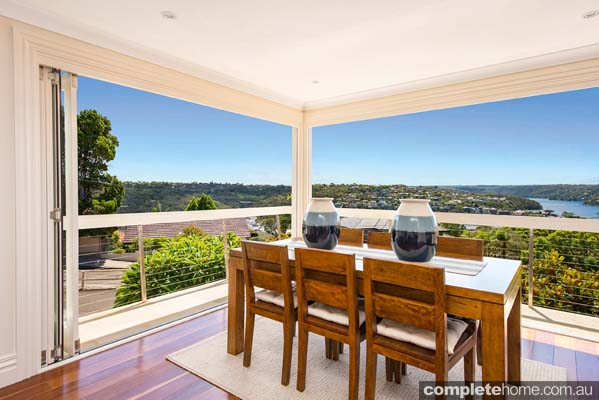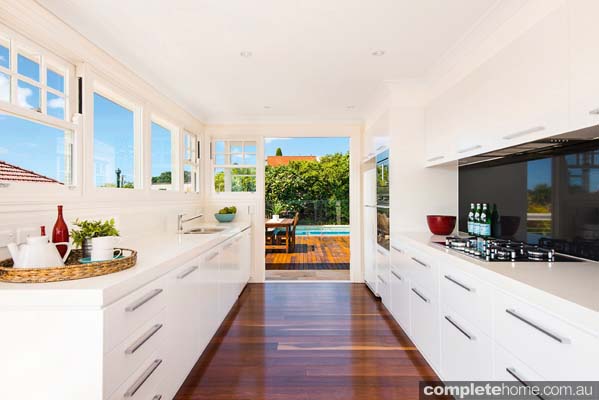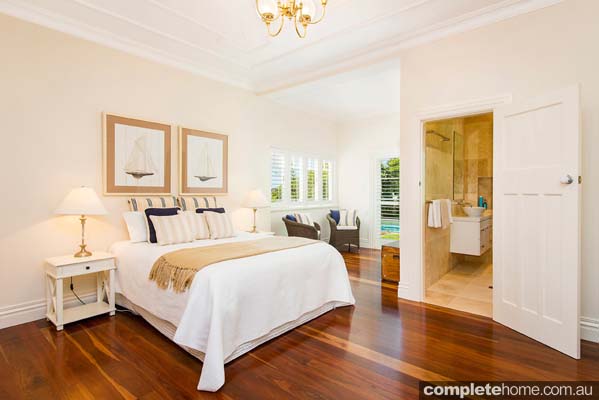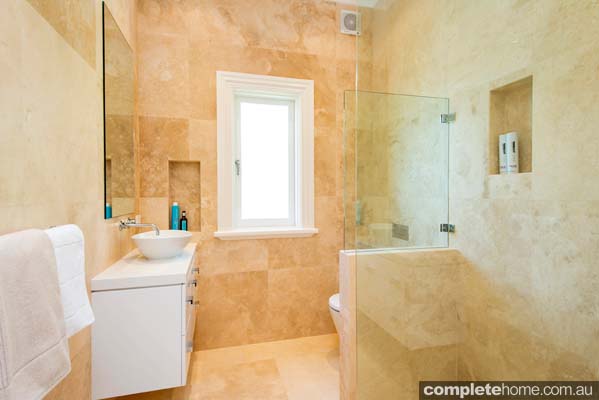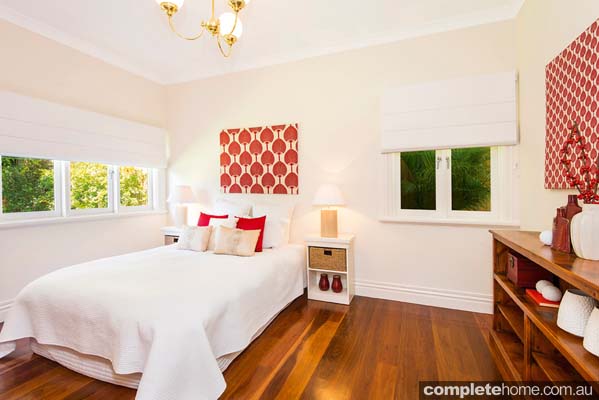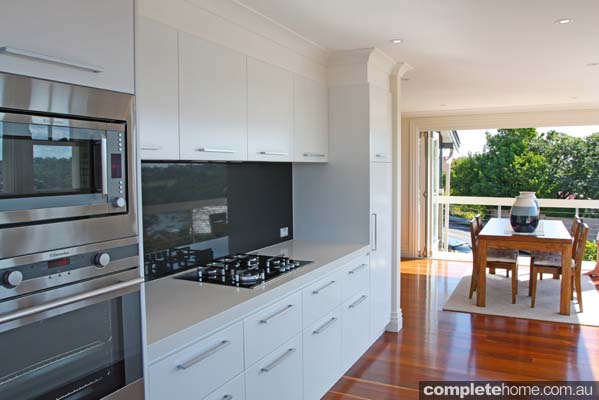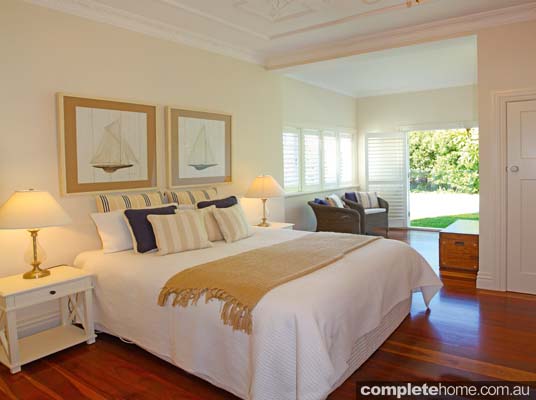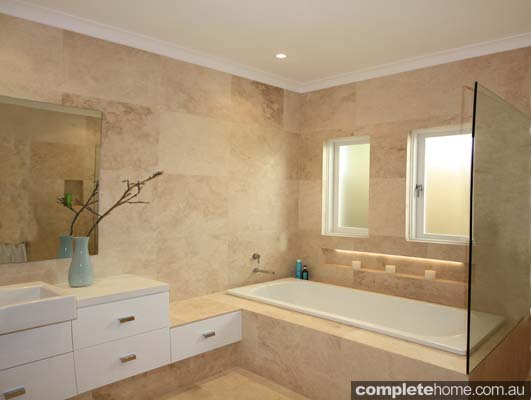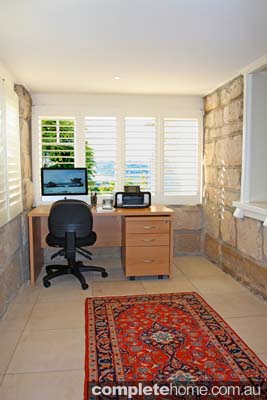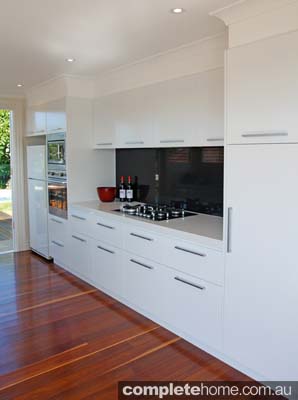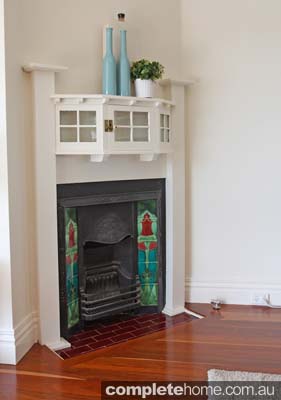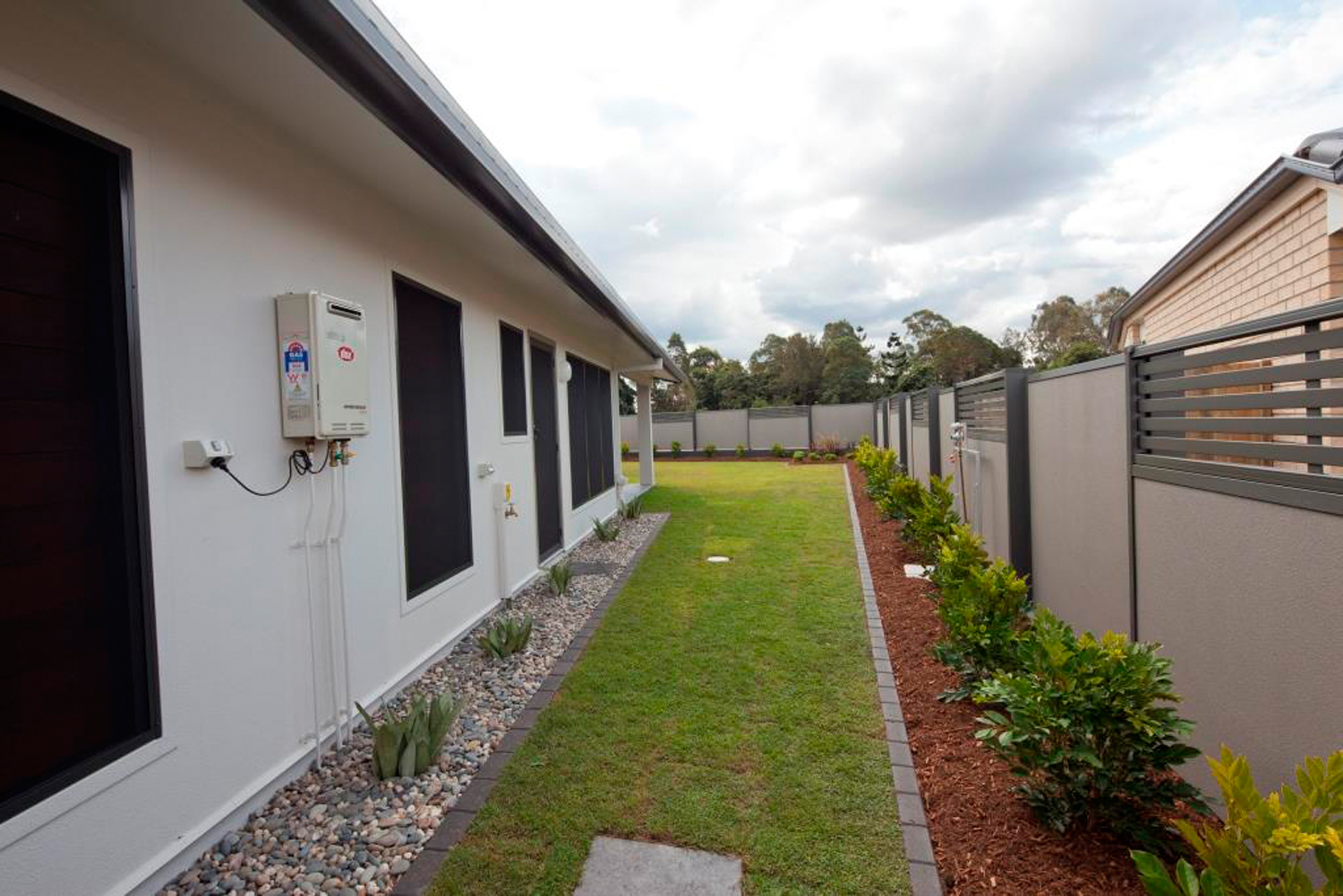A case of good things come to those who wait, this dilapidated home was restored to its former glory using the best old materials and work practices — and modern ones where necessary
“There is nothing more challenging than a client who knows exactly what they want, except being your own client, knowing exactly what you want, and not listening to your own professional advice!” says John Storch of A Total Concept Landscape Architects and Pool Designers (ATC), who, as well as being owner of this home, happened to be the designer of its rejuvenation.
John and his wife Alice purchased their very dilapidated Cremorne house in 2003. Originally constructed in the early 1900s, it had been owned by one family for more than 50 years and had been progressively renovated piecemeal by the owner builder and then later by his son, with little regard to style.
The scope of the project, undertaken by John’s company, included the design, council approvals, tender instigation and project management for alterations and additions to the residence and all external areas. “Having worked on hundreds of clients’ residences for more than 25 years and wanting to design my own home and external spaces for some time, I was able to put into practice what I have professed to others for so long,” says John.
The inspiration for the design was to redevelop the house into a traditional, comfortable family home — an ambitious project that was carried out in two stages
over several years. “One unusual challenge was designing the property so that it was operational for use by our business and then at a later stage reintegrating the space into the home itself without having to redo major structural works,” says John.
Stage one was to have the downstairs areas functioning as an office for ATC, a process that had to be undertaken over a six-week Christmas break to ensure continuity of the business.
The home had once been used for long-term guest accommodation; hence the lower floorplan was a mess of small, non-integrated rooms and an old dorm-style bathroom with several showers and toilet cubicles. A separate entry was designed for clients and the original stairs between the two levels were filled in to create a work area and a private area.
The first stage was all about functionality. Most internal walls in the lower level were removed to create a 15 x 5m open-plan workspace. This involved serious engineering to hold up the house above and some inventive construction by builder James Hurt and his team. A separate 5 x 3m room was constructed as a client meeting area and a materials sample room was excavated into the sub-floor area adjacent to the meeting room. A kitchenette and separate bathroom were also constructed for John and his team of designers.
“The original floor-to-ceiling height for the downstairs area was around two metres, so we were required to excavate down to make the space habitable,” says John. “This entailed underpinning all perimeter walls section by section — a long, drawn-out process — with the house above jacked up while the walls below were reconstructed.”
Nine years later, when funds became available, stage two commenced. This included alterations and additions to the home’s private areas and reintegration of the office into the home because the business had outgrown the space.
Designed by ATC, this work included reconfiguration of the upper-level internal spaces with the relocation of the kitchen and living areas from the south side of the home to the northern side. The kitchen and dining room were made into one space through the removal of internal walls, then were opened up to viewing decks on the north and western elevations with six- and four-panel concertina doors to take advantage of the extensive water and district views.
“The original living and kitchen areas were all on the south side of the house,” says John. “We relocated them to the northern and western aspects, which not only opened the main-use areas to the views but also allowed a self-heating component in the winter months and, with the large concertina doors, a cooling effect in summer.”
In addition, there was the relocation and redesign of a secondary kitchenette, the redesign of three bathrooms (two of which were also relocated) and an infill of a covered pergola to create an elaborate second main bedroom. By lifting the skillion roof along the eastern rear of the residence from 2.4m clearance to more than 3m, ATC was able to achieve high ceilings throughout the home.
This stage also involved the reinstatement of an original open-style verandah from
a closed-in sunroom to take advantage of water views. “We opened up the verandah, installed a new decorative, period-style balustrade, which was extended down the entry stairs and designed traditional, painted-brick, structural piering with sandstone capping and timber posts for the verandah,” says John.
The front external spaces were redesigned in a period style to complement the residence. Following consultation of old photos, the dilapidated front boundary fence was resurrected using sandstone excavated from beneath the fence and from redundant foundations. A pedestrian entrance was incorporated into the design with sandstone paving used for the path and stairs, and also for the front verandah. Sandstone paving was installed for the entry path and stairs, and was used over the front verandah. New steps created a grand, open entry and the meanly proportioned side entry was removed.
A traditional-style box window now features as part of the elevation of the front bedrooms. Aluminium windows and rotten timber windows to all elevations were removed and Federation-style windows and doors were installed. The design and installation of traditional bargeboard and fascia timbers helped return the home to its more traditional period-style roots.
The separate ‘office’ entry was also closed in, and the office was converted into living spaces — a teenagers’ games room and retreat. Reopening and rebuilding the staircase between the two levels doubled the floor space of the home.
“The grey ironbark stairs that were built in situ, with each piece selected for its consistency of colour, is one bit of detailing that looks great,” says John.
Other finishing touches included the removal of old cypress pine timber floors and the installation of grey ironbark timber floors throughout — the biggest splurge on the project. “The floors were functional but not quite right for the look we wanted to achieve,” says John. “We looked at different modern floating timber floors and restaining the existing floors, which would have been a substantially cheaper option, but in the end we decided to bite the bullet and replace the floors with grey ironbark timber flooring laid in a traditional tongue-and-groove manner. The timber was
a mix of clear and mid-range quality to achieve a very specific look. Renewing the timber floors was a very costly exercise but it was the right thing to do for the look we were after.”
The family says it has no one favourite part of the renovated space “but more a series of successful smaller detailing components that just worked,” says John. “The shelving niches that we installed in the main bathroom and the ensuite look great with LED lighting and are extremely functional.
“And then there’s the glass splashback in the kitchen behind the cooktop that was going to be done in a matching coloured glass. At the last minute, this was changed to Caesarstone Night Sky to contrast with the benchtop. It took the space from ordinary to a stunning feature.”
The scope of this project wasn’t limited to the house, but also included work to the external areas including swimming pool, timber entertaining deck, lawns and garden areas located to the rear, plus a new boundary fence, retaining walls, front steps and driveway, all designed by ATC.
As Cremorne is a very hilly suburb, north facing in the majority and running down to Sydney’s Middle Harbour, a level lawn area is a rare and cherished commodity for young families looking to buy here. The original swimming pool was very dilapidated, oversized for the space it was in and took up the entire area to the rear of the residence, which lacked any usable lawn as a result. “We knew that this was a major detraction from the potential resale of the property,” says John. “We cut the pool in half, adding extensive swimouts for lounging and entertaining purposes, and realigned the sides of the pool to simplify the shape, focusing on the lawn rather than the pool. Reducing the size of the pool gave us the level, usable lawn area that we wanted for resale value.”
The pool’s existing Marblesheen lining was replaced with Ice Blue Quartzon. In place of the original dated waterline tiles, natural Himalayan sandstone was installed to visually extend the surrounding paving material into the pool. This effectively reads as a more substantial edge and bolsters the visual strength of the pool.
“We also rebuilt and extended an existing timber deck to create an entertaining area immediately adjacent to the pool and linking the pool directly to the living areas of the home. We installed steps from the timber deck to provide an external link to the downstairs garage and rooms, and installed glass fencing to ensure a strong, visual connection between the home, deck and pool,” says John.
Due to its elevated nature, the rear garden area takes advantage of water and district views while providing a very private external space for the owners. The plants that were chosen are quick-growing, waterwise and require minimal maintenance.
Planting in the rear garden included retention of existing Viburnum tinus (Bay Laurel), Laurus nobilis (Bay Tree) and Michelia figo (Port Wine Magnolia). New plants required craning in, including several large Magnolia ‘Little Gems’ and mature Plumeria rubra (Frangipani, one yellow/white flowering and one pink/yellow flowering), Beschorneria yuccoides (Mexican Lily), Philodendron xanadu (Dwarf Elephant Ears), Clivia miniata (Clivia), Cordyline, Salvia (Indigo Spires) and Agapanthus orientalis to create a tropical feel.
The plant selection reflects period planting and suits the colour scheme of the house. This included retention of several large palms and Camellias, and supplementary planting of a pseudo ‘cottage garden’ using Dwarf Morning Glory, African daisies, several mature Frangipani’s, Mexican Lilies, Hot Pink Salvias, Agapanthus orientalis, Doryanthes excelsior, Westringia fruticosa (Coastal Rosemary) and Tradescantia pallida (Purpurea). Screen planting to boundaries included Syzygium ‘Cascade’ (Cascading Lillypilly).
All sandstone removed from sub-floor areas was reused, either in landscape walling or as feature walling within the residence. The original pink, stamped-concrete driveway, with a border of low sandstone walls, was brought back to life with a heavily textured onyx paint guaranteed to last for years.
“The entire project was undertaken with budget at the forefront of our minds,” says John. “After the GFC, being in the design profession, I was very conscious of over-capitalising and we wanted to be able to live in the home for a year after renovation and then sell with a profit. As things turned out, we only had six months back in and an offer was made through an agent that was way more than what we wanted, so we decided to accept the offer, move and do it all again.”
A Total Concept has succeeded in redesigning the entire property to create a stunning period home on a budget, with a very specific brief of maximising the value for dollar. “This home has been sold for a figure far beyond our expectations,” says John.
FLOORING
Kitchen/dining/living/bedroom: 150mm tongue-and-groove grey ironbark timber from Warringah Timbers
Stair: Select grey ironbark timber from Warringah Timbers
Study and landings: Select-grade honed finish Himalayan sandstone from Amber Seaforth
WALLS
Kitchen/dining/living/bedroom: Dulux Hog Bristle half-strength
Stair: Dulux Hog Bristle half-strength and Parchment USA
Outdoor: Dulux Army Issue and Linseed
Games room: Dulux Parchment USA
KITCHEN
Benchtop: Quantum Quartz Luna White
Splashback: Caesarstone Night Sky behind cooktop, Quantum Quartz Luna White behind sink
Cabinetry: Dulux White on White
Appliances: Electrolux stovetop, oven and fridge; Abey sinks; Bosch dishwasher and microwave
BATHROOM FITTINGS
Cabinetry: Dulux White on White
Basin: White stone
Tiles/walls & floor: Main and ensuite — Cappuccino cross-cut travertine on special
order from Amber Seaforth
Tiles/walls: Third bathroom — DaVinci Gloss White with matching Bologna marble feature tiles from Amber Seaforth
Tiles floor: Third bathroom — Chelsea porcelain from Amber Seaforth
Feature wall third bathroom: Original sealed sandstone — foundation stone
Sanitary fixtures: Wall-hung hideaway system
Taps: Phoenix
Shower/bath: Caroma
LIGHTING
LED gimble and LED strip lights
WINDOWS & EXTERNAL DOORS
Glass: Viridian
Frames: Trend
OUTDOOR
Roof: Original tiles to front and Colorbond Ironstone steel sheeting to rear
Paving: Outdoor front — Australian diamond-sawn sandstone specially ordered from Amber Seaforth
Outdoor balcony & pool: Select-grade natural finish Himalayan sandstone from Amber Seaforth
Deck: Select-grade mixed Australian hardwoods from Warringah Timbers
Furniture: Recycled teak
This project was designed & project managed by:
A Total Concept 65 West Street, North Sydney NSW 2060
Tel: 02 9957 5122
Mobile: 0407 245 201
Email: design@atotalconcept.com.au
Web: atotalconcept.com.au
Stage 1 of the project was built by:
James Hurt Building Constructions
Email: jameshurt@bigpond.com.au
The pool was built by:
Pride Pools
Email: darryl@pridepools.com.au
Web: pridepools.com.au
Finishing landscape contractor:
Urban Escape Landscape Contractors
Email: nick@urbanescape.com.au
Web: urbanescape.com.au
Words by Danielle Townsend
Photography by John Storch
Originally from Australian Period Style magazine, Volume 8
